Abstract
The oxidation by Ferrobacillus ferrooxidans of untreated pyrite (FeS2) as well as HCl-pretreated pyrite (from which most of the acid-soluble iron species were removed) was studied manometrically. Oxygen uptake was linear during bacterial oxidation of untreated pyrite, whereas with HCl-pretreated pyrite both a decrease in oxygen uptake at 2 hr and nonlinear oxygen consumption were observed. Ferric sulfate added to HCl-pretreated pyrite restored approximately two-thirds of the decrease in total bacterial oxygen uptake and caused oxygen uptake to revert to nearly linear kinetics. Ferric sulfate also oxidized pyrite in the absence of bacteria and O2; recovery of ferric and ferrous ions was in excellent agreement with the reaction Fe2(SO4)3 + FeS2 = 3FeSO4 + 2S, but the elemental sulfur produced was negligible. Neither H2S nor S2O32− was a product of the reaction. It is probable that two mechanisms of bacterial pyrite oxidation operate concurrently: the direct contact mechanism which requires physical contact between bacteria and pyrite particles for biological pyrite oxidation, and the indirect contact mechanism according to which the bacteria oxidize ferrous ions to the ferric state, thereby regenerating the ferric ions required for chemical oxidation of pyrite.
Full text
PDF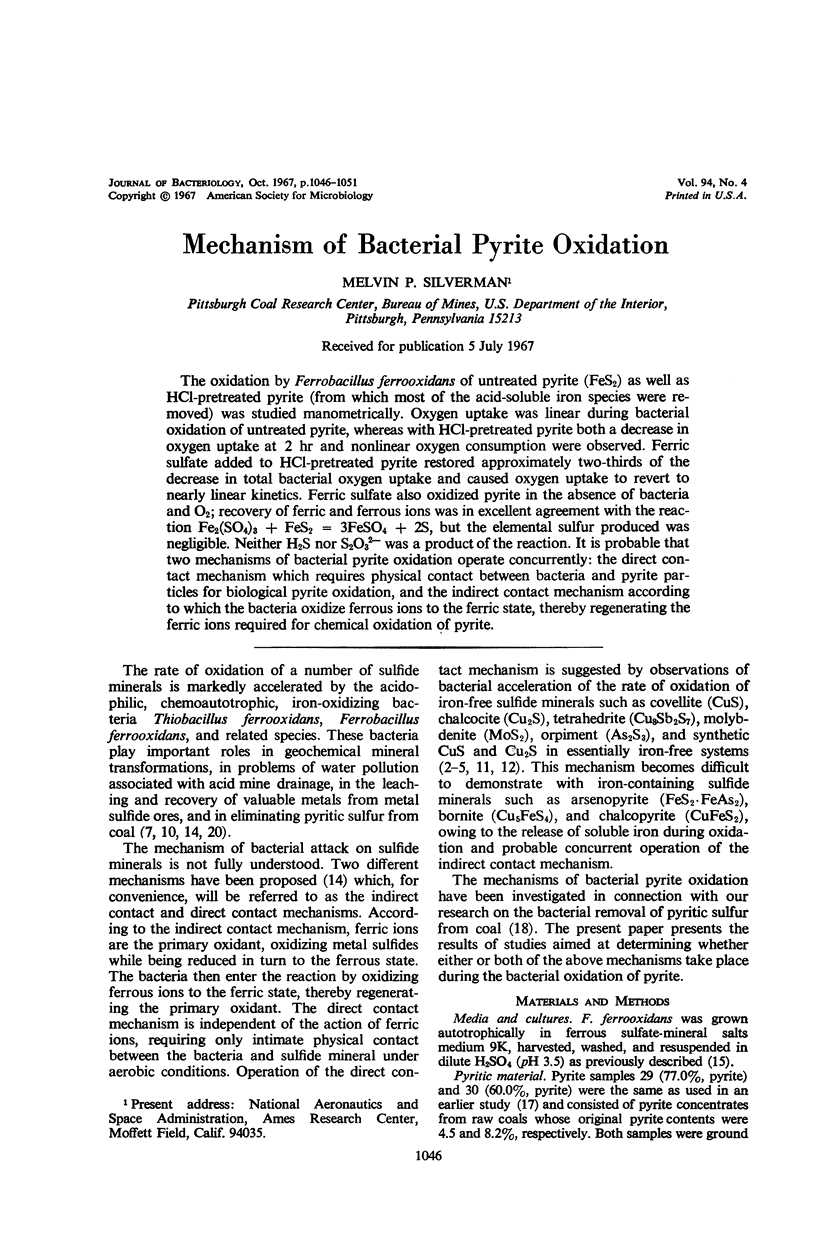
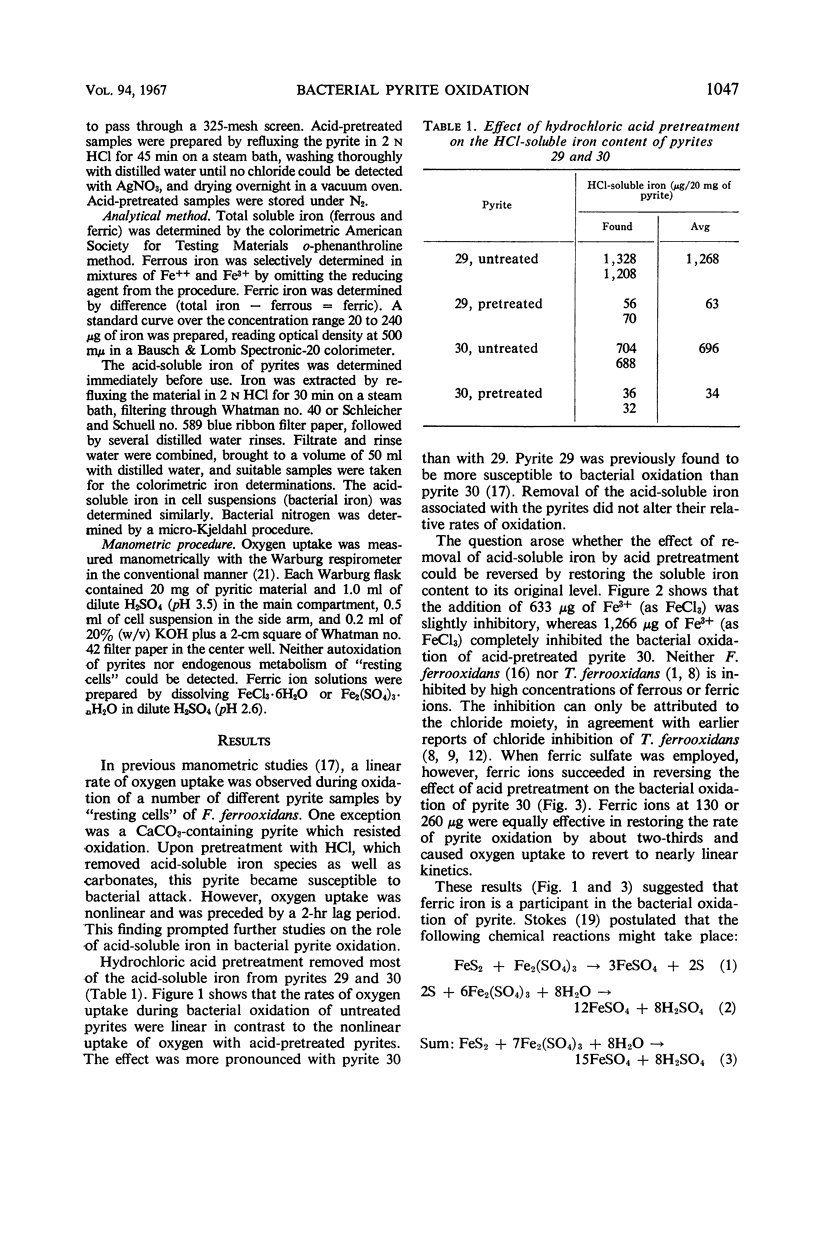
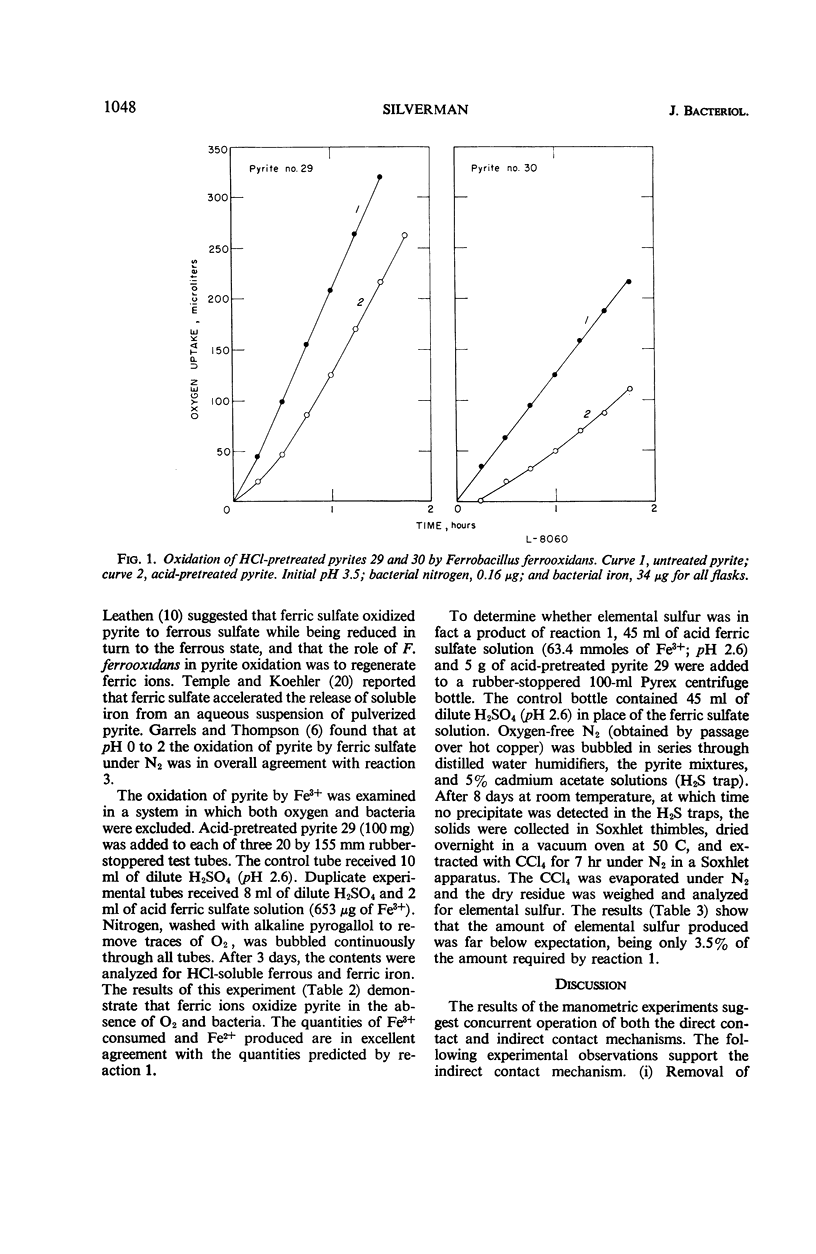
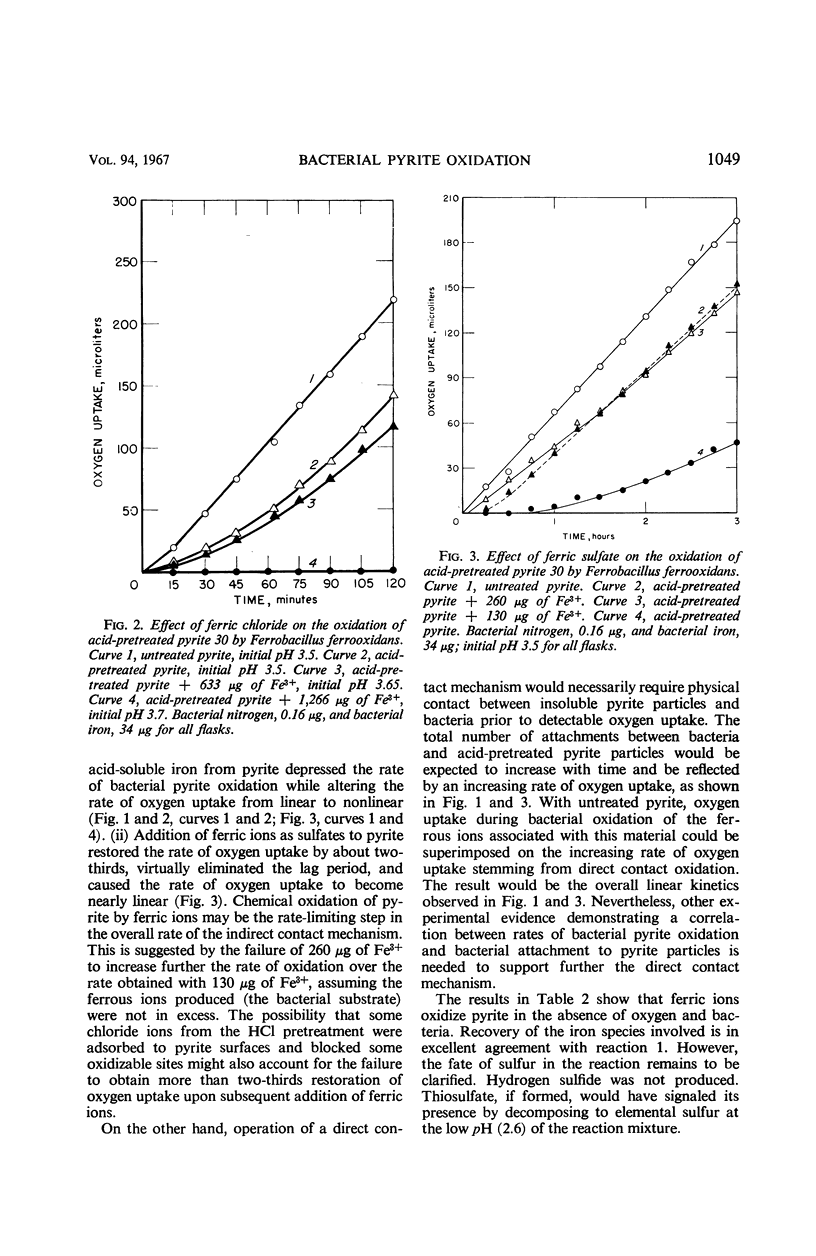
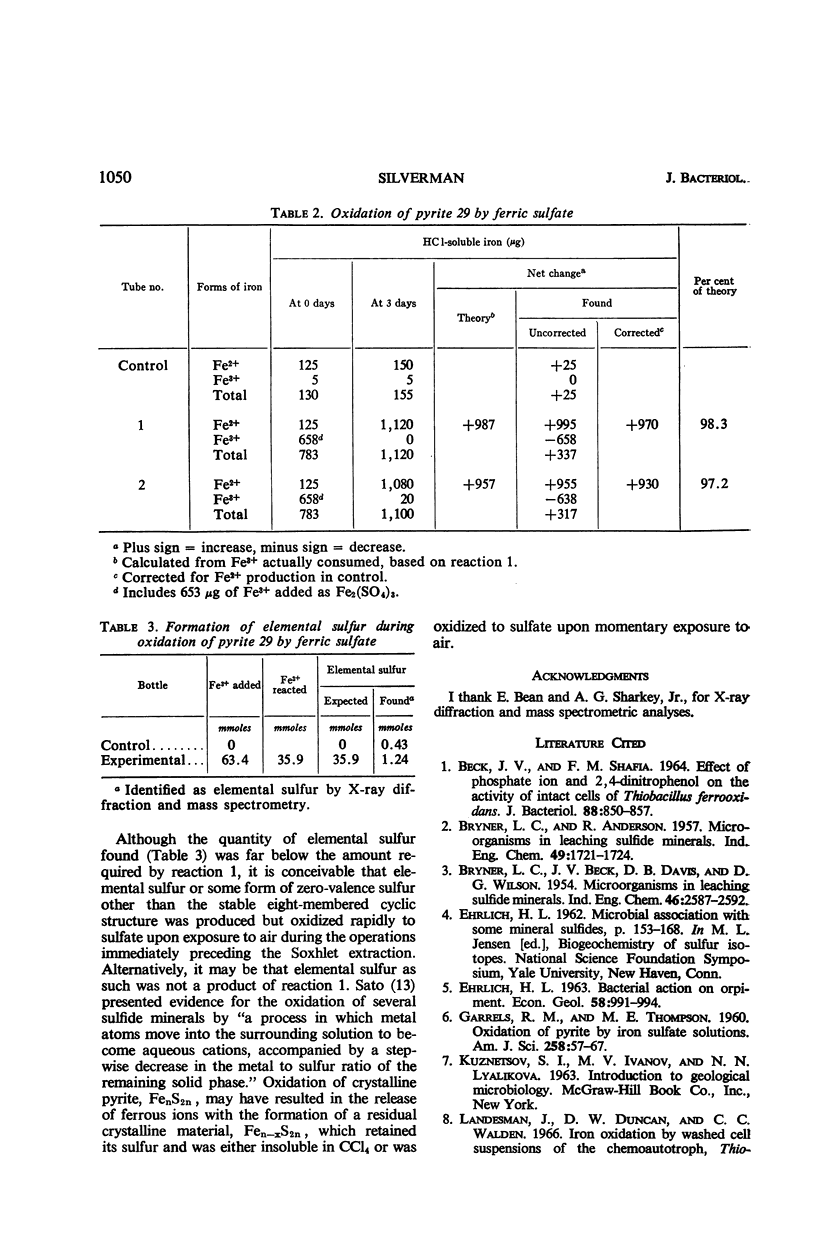
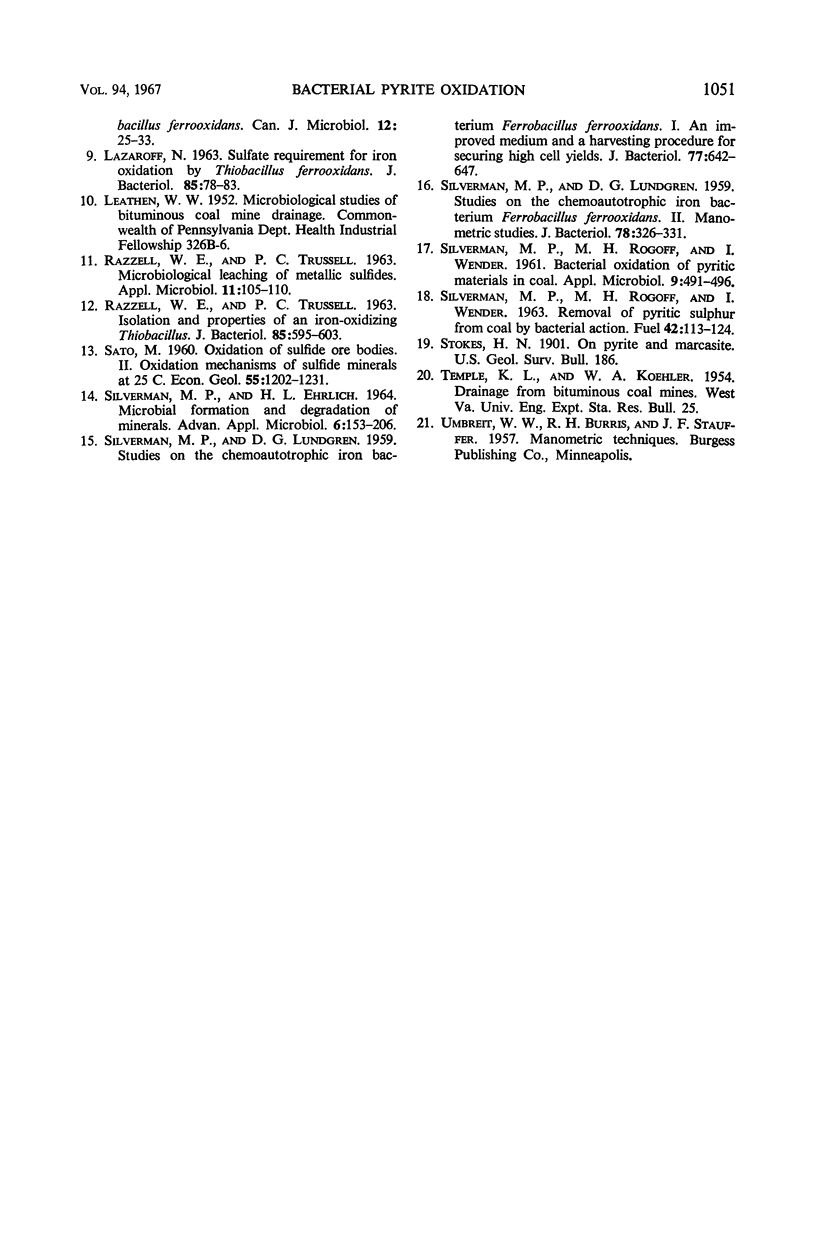
Selected References
These references are in PubMed. This may not be the complete list of references from this article.
- BECK J. V., SHAFIA F. M. EFFECT OF PHOSPHATE ION AND 2,4-DINITROPEHENOL ON THE ACTIVITY OF INTACT CELLS OF THIOBACILLUS FERROOXIDANS. J Bacteriol. 1964 Oct;88:850–857. doi: 10.1128/jb.88.4.850-857.1964. [DOI] [PMC free article] [PubMed] [Google Scholar]
- Lazaroff N. SULFATE REQUIREMENT FOR IRON OXIDATION BY THIOBACILLUS FERROOXIDANS. J Bacteriol. 1963 Jan;85(1):78–83. doi: 10.1128/jb.85.1.78-83.1963. [DOI] [PMC free article] [PubMed] [Google Scholar]
- RAZZELL W. E., TRUSELL P. C. ISOLATION AND PROPERTIES OF AN IRON-OXIDIZING THIOBACILLUS. J Bacteriol. 1963 Mar;85:595–603. doi: 10.1128/jb.85.3.595-603.1963. [DOI] [PMC free article] [PubMed] [Google Scholar]
- Razzell W. E., Trussell P. C. Microbiological Leaching of Metallic Sulfides. Appl Microbiol. 1963 Mar;11(2):105–110. doi: 10.1128/am.11.2.105-110.1963. [DOI] [PMC free article] [PubMed] [Google Scholar]
- SILVERMAN M. P., LUNDGREN D. G. Studies on the chemoautotrophic iron bacterium Ferrobacillus ferrooxidans. I. An improved medium and a harvesting procedure for securing high cell yields. J Bacteriol. 1959 May;77(5):642–647. doi: 10.1128/jb.77.5.642-647.1959. [DOI] [PMC free article] [PubMed] [Google Scholar]
- SILVERMAN M. P., LUNDGREN D. G. Studies on the chemoautotrophic iron bacterium Ferrobacillus ferrooxidans. II. Manometric studies. J Bacteriol. 1959 Sep;78:326–331. doi: 10.1128/jb.78.3.326-331.1959. [DOI] [PMC free article] [PubMed] [Google Scholar]
- Silverman M. P., Rogoff M. H., Wender I. Bacterial Oxidation of Pyritic Materials in Coal. Appl Microbiol. 1961 Nov;9(6):491–496. doi: 10.1128/am.9.6.491-496.1961. [DOI] [PMC free article] [PubMed] [Google Scholar]


